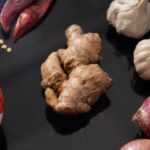Effective Ways to Remove Meat Odor
Boiled meat is a simple yet delicious dish commonly used in family meals. Boiled pork can be combined with salt and lime, chili sauce, shrimp paste, or fish sauce… and can also be used in many other dishes such as rice paper rolls or salads with various vegetables.
However, many people encounter the problem that the boiled meat is not flavorful due to a strong odor. To solve this problem, you can apply the following tips:
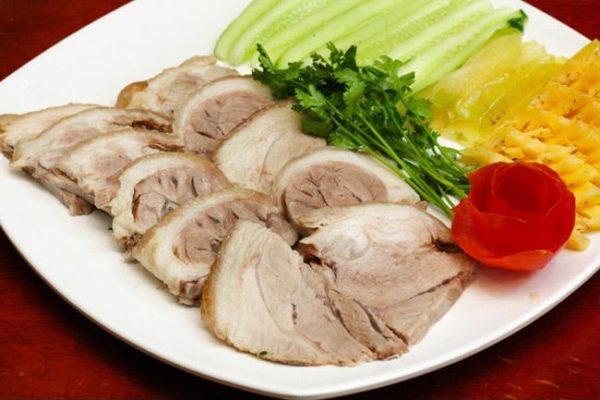
Wash the meat with diluted saltwater to disinfect and reduce the meat’s odor. Choose a piece of meat that contains both lean meat and fat for a delicious boiled meat dish. Pork trotters, belly meat… are often tastier than ham or butt meat when boiled. Prepare some additional ingredients such as vinegar or lime, a small piece of ginger, a dry onion, soft dental floss or string to enhance the flavor of the boiled meat.
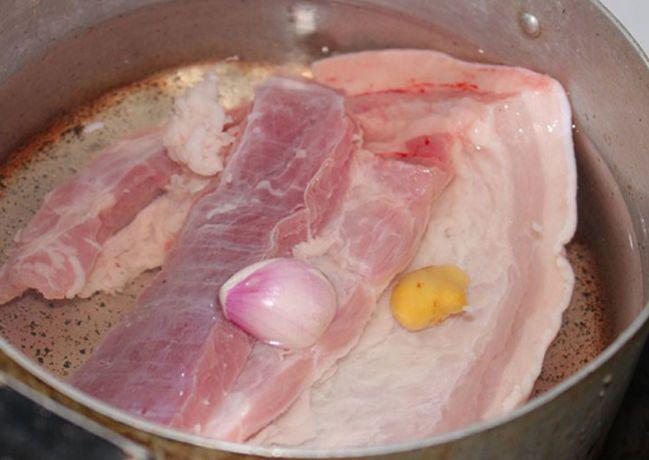
Why Should You Boil Meat Twice?
To have delicious meat without any odor, you can boil the meat twice. In the first round, put the piece of meat into a pot, pour enough water, and boil it for 2-3 minutes. Then, add a few drops of vinegar or lemon juice to the pot to remove the odor and make the meat whiter. Next, discard the boiling water, rinse the meat with warm water, and prepare for the second round of boiling.
For the second round, prepare a pot of boiling water and put the meat in it along with a few pinches of salt, thin slices of ginger, and a peeled dry onion. Cook the pot over low heat and continue boiling the meat until it is fully cooked. When cooked, the meat will be tender, white, and flavorful.
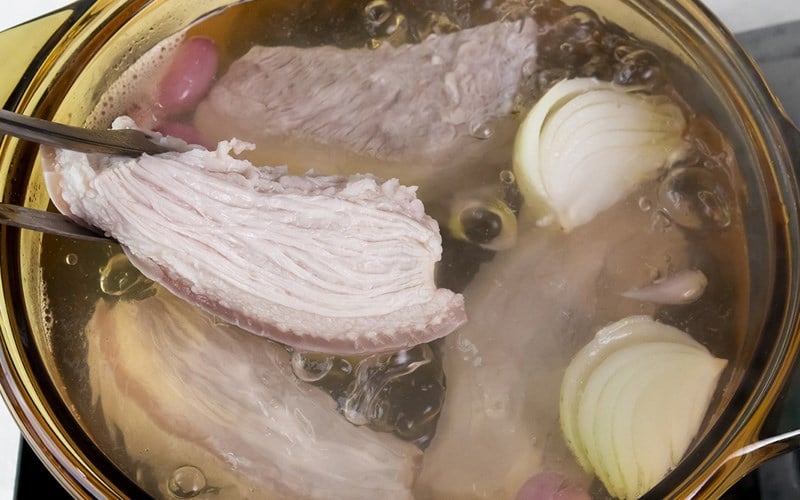
Add Salt, Ginger, and Onion
Salt helps to evenly distribute the boiling water, ginger helps to eliminate odor, and onion adds a delicious aroma to the boiled meat. When boiling the meat, you should simmer the water until it is fully cooked. To check, you can use a fork to poke the meat. If the meat releases pinkish liquid, you should boil it for another 5 minutes. If the meat is fully cooked, the fork will go through easily and there will be no pinkish liquid.
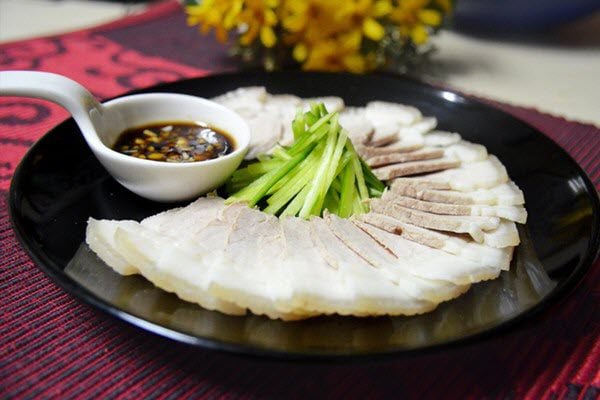
Once the meat is cooked, remove it from the pot and soak it in a bowl of cold water with a few pieces of ice. The cold water will help the meat shrink and maintain its shape, avoiding dryness and discoloration. After the meat has completely cooled down, you can slice it for immediate use.
If you want to slice the meat evenly and beautifully, you should refrigerate it for a few more hours. Before packing it back, tightly wrap the meat with food wrap and refrigerate it for a few hours to make the meat firm and easier to slice.

























